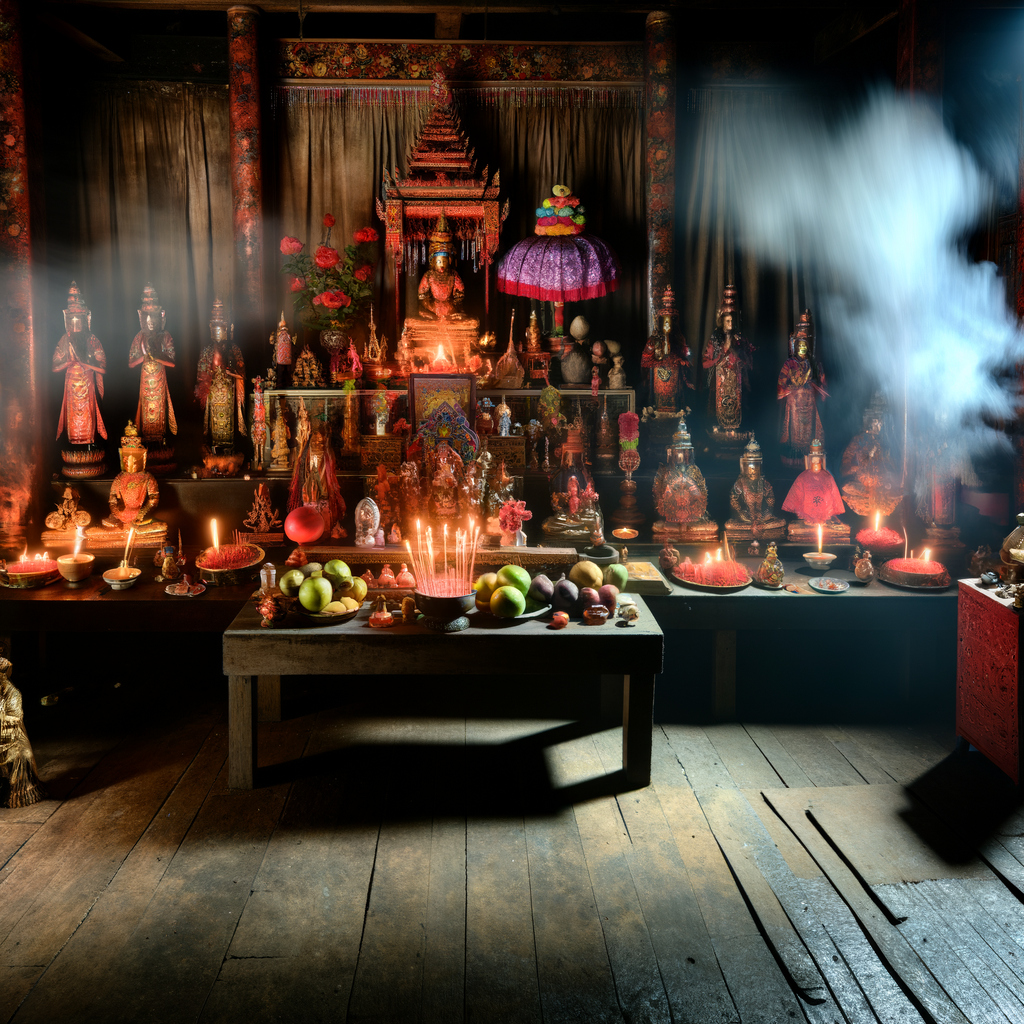Many people consider Santeria and Voodoo for one and the same, attributing to them dark rituals and obscure practices. Nothing could be further from the truth. These two religions, although rooted in West Africa and marked by the influence of Catholicism, have developed into separate but related belief systems. This article aims to provide an overview of their history, similarities and differences, demystifying these often misunderstood spiritual paths.
Santeria: The Cult of the Caribbean Saints

Santeria, which literally means "way of the saints" or "worship of the saints," is a syncretic religion that originated in Cuba between the 16th and 19th centuries. It is a fusion of traditional Yoruba beliefs from West Africa with elements of Catholicism. Its roots go back to the Yoruba tribes who practiced the Lucumi religion. As a result of the slave trade, beliefs These made their way to Cuba, where they merged with Catholicism to form a unique belief system. Santería spread in the United States in the mid-20th century with immigrants from Cuba, and today it is practiced by people of various nationalities, especially in Spanish-speaking communities.
Central to Santeria is the belief in Olodumare, the creator of the universe, and in the Orishas, deities who are emanations of Olodumare and mediate between him and humans. Orishas, like Catholic saints, have their own attributes, distinctive qualities and are responsible for various aspects of life. Orisha worship is based on offerings, prayers and adherence to certain moral principles. Santeria, as an Afro-Cuban tradition, has no central authority, and its practice varies from community to community and traditions passed down from generation to generation. Despite the proclamation of religious freedom in Cuba, Santeria long faced criticism from the Catholic Church, which viewed it as "folk witchcraft," and the government, which considered it "ancient witchcraft." Today, however, Santeria is increasingly accepted and respected, and is estimated to be practiced by nearly 80% Cubans, sometimes even referred to as the "national religion."
Voodoo: The Power of Spirit
Voodoo, a word derived from West African languages and meaning "moral backbone," is a religion that also arose from the fusion of traditional African beliefs, mainly of the Fon and Ewe tribes of what is now Benin, with elements of Catholicism. It developed in Haiti between the 16th and 19th centuries, during the slave trade era. Like Santeria, Voodoo combines belief in a supreme God, Bondye, with the worship of spirits, called Loa. The Loa, like the Orisha in Santeria, are intermediaries between God and humans and are responsible for various aspects of life.
Voodoo, like Santeria, is a religion passed down orally through rituals and spiritual practices. Voodoo rituals often include music, dancing, singing, prayers, and animal sacrifices. Central to this is a trance in which the Loa "ascends" into a person, enabling them to communicate with spirits, heal, prophesy and do magic. Voodoo, like Santeria, has no central leadership, and its practice varies by region and tradition. Due to its complex history and often sensationalized depiction in pop culture, Voodoo is one of the most underrated and misunderstood religions in the world.
Similarities and Differences: Two Ways, Common Roots
Both Santeria and Voodoo share a belief in a supreme God, the worship of spirits (Orisha in Santeria and Loa in Voodoo), and the practice of trance in which the ghosts They "ascend" into human beings. Both religions originated in West Africa and were brought to the Caribbean by slaves. In both cases, traditional African beliefs have fused with Catholicism to create unique belief systems. Both Santeria and Voodoo place a high value on rituals, music, dance and animal sacrifices.
Despite these similarities, there are also important differences between Santeria and Voodoo. First of all, they differ in the names and characteristics of the deities (Orisha vs. Loa), as well as in the details of rituals and practices. Santeria developed mainly in Afro-Cuban communities, heavily influenced by Spanish culture, while Voodoo took shape in Afro-Haitian communities, influenced by French culture. These differences are due to the different historical and cultural contexts in which the two religions developed.
Summary: Respect and Understanding
Santeria and Voodoo are not "black magic" or "satanic cults," as they are often portrayed in pop culture. They are complex and profound belief systems that have their roots in African traditions and Catholicism. While they may seem exotic and incomprehensible, they deserve respect and understanding. The key to overcoming stereotypes and prejudices is knowledge and openness to difference. Both Santeria and Voodoo are a testament to the rich and diverse history of African and Caribbean people, as well as their spiritual strength and resilience.
